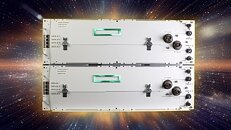Hundreds of Renesas' Intersil-Brand Radiation-Hardened ICs Lift Off Onboard Artemis 1 Mission to the Moon
Renesas Electronics Corporation, a premier supplier of advanced semiconductor solutions, today announced that hundreds of its radiation-hardened (rad-hard) integrated circuits (ICs), including over 50 different part numbers, are onboard the Artemis 1 launch that blasted off on November 16. Intersil-brand rad-hard ICs are part of the battery management systems, RS-25 engine control electronics and the launch abort system on the Space Launch System that propelled the mission into space, the most powerful rocket ever built. On the Orion Capsule that will circle the moon, Renesas provided critical components for controller boards, the main flight computer, the docking camera system, the power distribution system and display and panel electronics. The Intersil-brand ICs perform multiple functions, including power management and precision signal processing.
Artemis is the ambitious NASA program that will take humankind back to the moon for the first time in more than 50 years. Artemis 1 is sending the test-mannequin populated Orion capsule to orbit the moon and deploy cubesats and other space experiments on a 42-day mission to test all the critical systems. Artemis 2 (2024) will have a crew that will orbit the moon paving the way for Artemis 3 (2025), which will land the first woman and the first person of color on the moon. The plan is for Artemis to continue to build a space station in lunar orbit and a base on the lunar South Pole. This infrastructure will allow for the awe-inspiring goal of a crewed mission to Mars in the 2040s.
Artemis is the ambitious NASA program that will take humankind back to the moon for the first time in more than 50 years. Artemis 1 is sending the test-mannequin populated Orion capsule to orbit the moon and deploy cubesats and other space experiments on a 42-day mission to test all the critical systems. Artemis 2 (2024) will have a crew that will orbit the moon paving the way for Artemis 3 (2025), which will land the first woman and the first person of color on the moon. The plan is for Artemis to continue to build a space station in lunar orbit and a base on the lunar South Pole. This infrastructure will allow for the awe-inspiring goal of a crewed mission to Mars in the 2040s.






